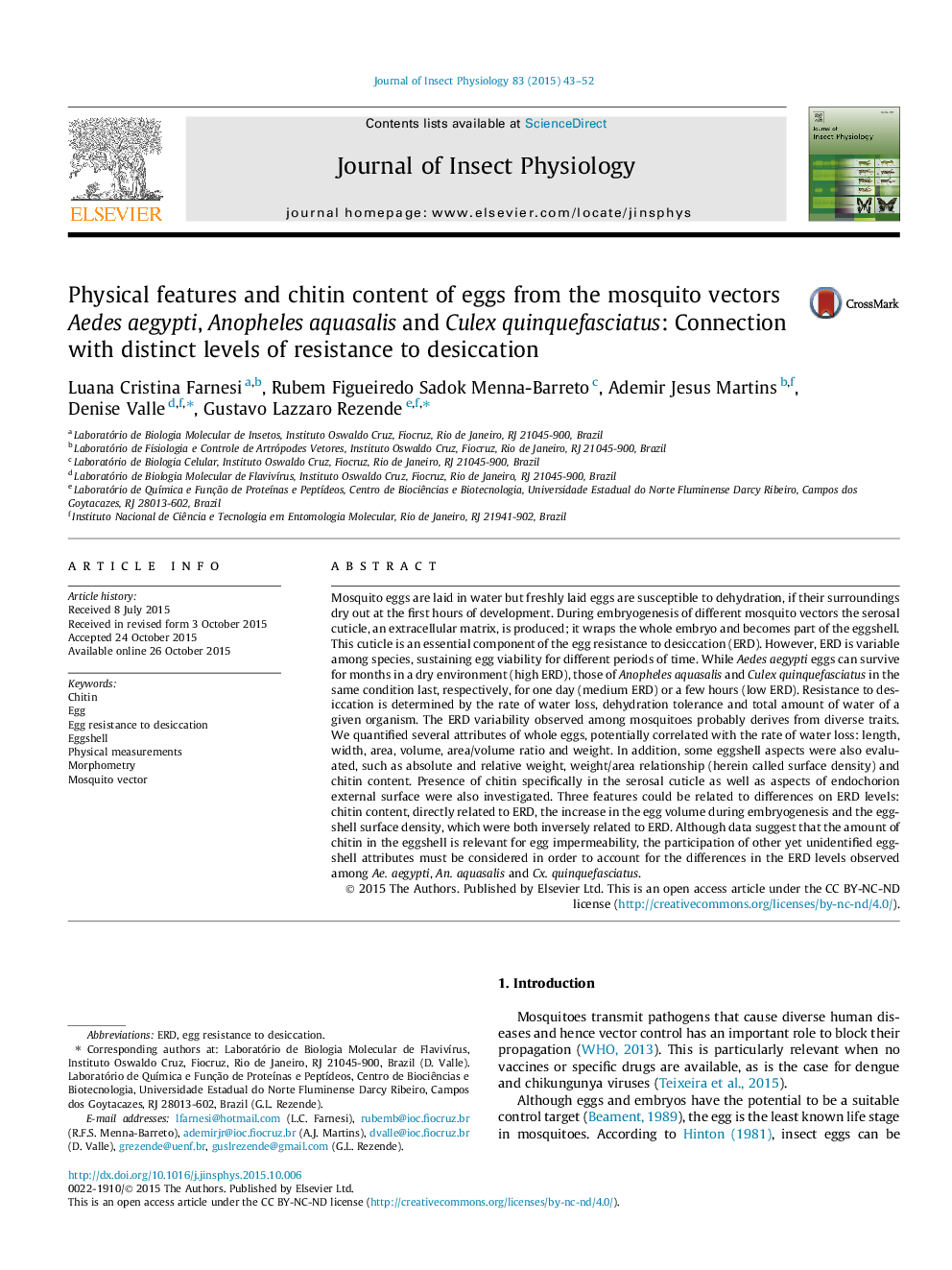| کد مقاله | کد نشریه | سال انتشار | مقاله انگلیسی | نسخه تمام متن |
|---|---|---|---|---|
| 5921427 | 1570987 | 2015 | 10 صفحه PDF | دانلود رایگان |

- Egg size and weight varies among Ae. aegypti, An. aquasalis, Cx. quinquefasciatus.
- External endochorion surface aspect varies among mosquito eggs.
- Chitin is present in mosquitoes' serosal cuticle but tends to vary among species.
- Eggs with more chitin resist desiccation better.
- Eggs with low volume increase and low surface density resist desiccation better.
Mosquito eggs are laid in water but freshly laid eggs are susceptible to dehydration, if their surroundings dry out at the first hours of development. During embryogenesis of different mosquito vectors the serosal cuticle, an extracellular matrix, is produced; it wraps the whole embryo and becomes part of the eggshell. This cuticle is an essential component of the egg resistance to desiccation (ERD). However, ERD is variable among species, sustaining egg viability for different periods of time. While Aedes aegypti eggs can survive for months in a dry environment (high ERD), those of Anopheles aquasalis and Culex quinquefasciatus in the same condition last, respectively, for one day (medium ERD) or a few hours (low ERD). Resistance to desiccation is determined by the rate of water loss, dehydration tolerance and total amount of water of a given organism. The ERD variability observed among mosquitoes probably derives from diverse traits. We quantified several attributes of whole eggs, potentially correlated with the rate of water loss: length, width, area, volume, area/volume ratio and weight. In addition, some eggshell aspects were also evaluated, such as absolute and relative weight, weight/area relationship (herein called surface density) and chitin content. Presence of chitin specifically in the serosal cuticle as well as aspects of endochorion external surface were also investigated. Three features could be related to differences on ERD levels: chitin content, directly related to ERD, the increase in the egg volume during embryogenesis and the eggshell surface density, which were both inversely related to ERD. Although data suggest that the amount of chitin in the eggshell is relevant for egg impermeability, the participation of other yet unidentified eggshell attributes must be considered in order to account for the differences in the ERD levels observed among Ae. aegypti, An. aquasalis and Cx. quinquefasciatus.
Journal: Journal of Insect Physiology - Volume 83, December 2015, Pages 43-52